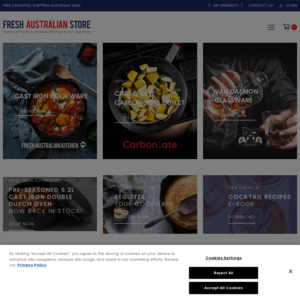Good price on this 32cm cast iron pan.
Reviews seem good although pre-seasoning may need a little attention and I think Fresh Australian Kitchen is misleading people a bit with this Chinese product.
Lodge seems to have a better rep than this brand but so does Staub and Le Creuset and I don't see any of them available in this size at this price.
I'm not sure when the promo ends.




 CamelCamelCamel
CamelCamelCamel

Re:
I think their use of the word 'skillet' to refer to a frying pan makes it clear to most of us that this is not made/sold by an Australian mob …